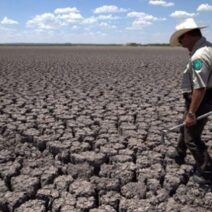Global warming, a phenomenon characterized by the progressive rise in Earth’s average temperature due to human activities, particularly the emission of greenhouse gases, poses one of the most pressing dilemmas facing society today. Yet, amidst the prevailing narratives of doom and gloom, an objective analysis of the situation reveals both the gravity of our predicament and the opportunities for mitigation. This exploration delves into the empirical data surrounding global warming, addresses common misconceptions, and elucidates the deeper systemic issues behind our fascination with climate change.
A common observation is that discussions surrounding climate change often evoke polarizing emotions—fear, urgency, indifference, and even skepticism. This emotional response can be attributed to an innate human proclivity to confront the unknown, particularly when the stakes are as high as the survival of our planet. The sensationalist portrayal of climate change in various media underscores this tendency. However, the scientific consensus paints a more nuanced picture that necessitates evaluation beyond mere sensationalism.
The Intergovernmental Panel on Climate Change (IPCC) has consistently reported that global temperatures are rising at an unprecedented rate, with the last decade being the hottest on record. Such evidence posits a legitimate cause for concern; however, it is paramount to discern the scale of the impact. For instance, projections indicate that, without substantial intervention, global mean temperature increases could exceed 2°C above pre-industrial levels by the end of the century. This benchmark is critical, as surpassing this threshold is likely to catalyze severe climate repercussions, including extreme weather events, rising sea levels, and ecosystem collapse.
Yet, one must ponder: how likely are these extreme scenarios, and what are the temporal horizons for such changes? Climate models, while complex, provide estimates that incorporate various socio-economic pathways. Notably, these models suggest that a business-as-usual trajectory would yield dire consequences, while aggressive mitigation strategies—such as transitioning to renewable energy sources, enhancing energy efficiency, and promoting sustainable land use—could substantially reduce projected temperature increases.
Moreover, the psychological phenomenon known as “doomism,” where individuals subscribe to the belief that catastrophic events are inevitable, can hinder proactive engagement with climate solutions. The tendency to become desensitized to alarming data can lead to an existential paralysis rather than inspiring action. Understanding the intricacies of climate data—where certainty is often accompanied by uncertainty—can help dispel these feelings of hopelessness. Science is inherently iterative, and ongoing research continuously refines our understanding of climate dynamics.
Crucially, analysis of human behavior sheds light on socioeconomic factors contributing to greenhouse gas emissions. Industrial practices, deforestation, and agricultural innovations have historically been at odds with environmental sustainability. Recognizing that environmental degradation is intertwined with economic inequality encourages a holistic approach in addressing climate change. The disparities in vulnerability and adaptation capacities among communities necessitate equity in climate policy, particularly for marginalized populations that disproportionately bear the brunt of climate impacts.
Beyond the scientific and social dimensions, the dialogue surrounding climate change is also steeped in ideological contexts. Some skeptics argue that climate policies threaten economic growth, while advocates emphasize that sustainable practices can foster innovation and generate economic opportunities. This dichotomy invites deeper scrutiny into our values and priorities as a society. A sustainable future does not necessitate sacrificing economic vitality but rather requires an evolutionary transition towards resilience and adaptability.
Additionally, there exists a fundamental interplay between climate change and biodiversity. The loss of species and habitats is closely linked to climate disruption; thus, efforts to mitigate climate change must simultaneously encompass biodiversity conservation. The interconnectedness of ecology and climate underscores the imperative of adopting an integrative approach, where policies are designed not merely to address carbon emissions but also to preserve our planet’s biological heritage.
As discussions on climate change proliferate, it becomes evident that the narratives shaping public discourse are often influenced by broader socio-political dynamics. The fascination with climate change frequently stems from a mix of legitimate concern and sensationalist rhetoric. The portrayal of climate disasters can capture attention and mobilize action; however, it is incumbent upon advocates, scientists, and policymakers to provide balanced perspectives that inform rather than frighten.
In conclusion, the question “How dire is global warming really?” demands more than a binary response of fear versus complacency. It challenges us to critically assess the facts, the implications, and the motivations behind our engagement with climate issues. By discerning the scientific evidence, acknowledging the socio-economic factors at play, and embracing the urgency of transformative action, society can confront the climate crisis with informed resolve. The stakes are undeniably high, yet through cohesive action aimed at mitigation, adaptation, and resilience, a sustainable future remains achievable—a reality that lies within our collective agency. The path forward requires collaboration, innovation, and an unwavering commitment to stewardship of our planet for generations to come.





